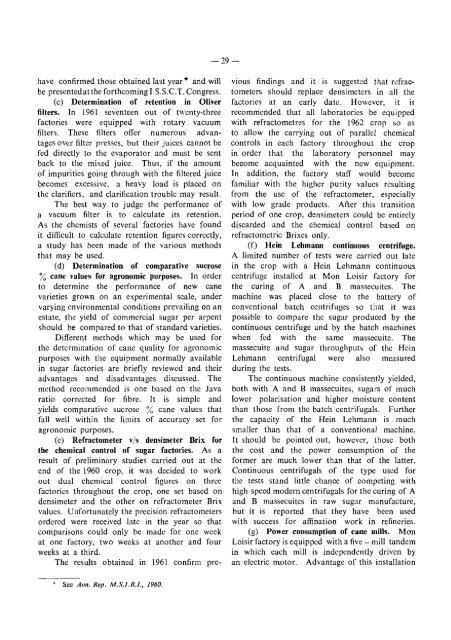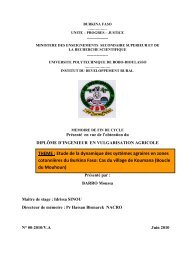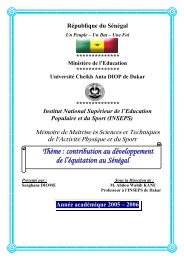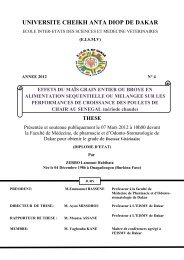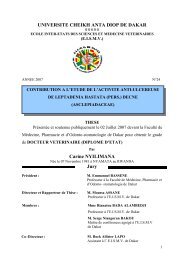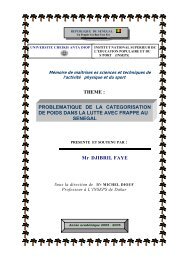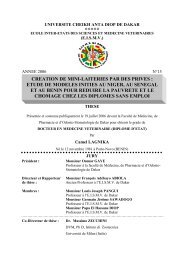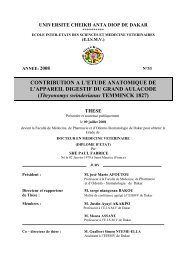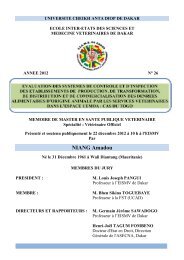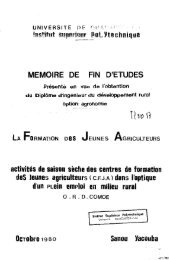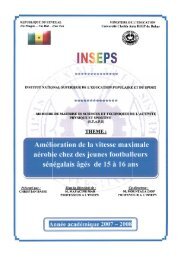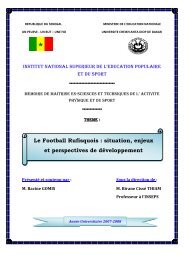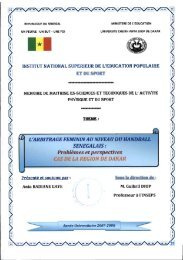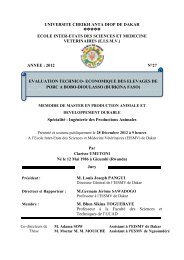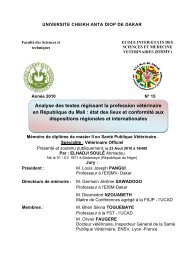Annual Report 1961 - BEEP
Annual Report 1961 - BEEP
Annual Report 1961 - BEEP
- No tags were found...
You also want an ePaper? Increase the reach of your titles
YUMPU automatically turns print PDFs into web optimized ePapers that Google loves.
-29-have confirmed those obtained last year * and willbe presentedat the forthcoming I.S.S.C.T. Congress.(c) Determination of retention in Oliverfilters. In <strong>1961</strong> seventeen out of twenty-threefactories were equipped with rotary vacuumfilters. These filters offer numerous advantagesover filter presses, but their juices cannot befed directly to the evaporator and must be sentback to the mixed juice. Thus, if the amountof impurities going through with the filtered juicebecomes excessive, a heavy load is placed onthe clarifiers, and clarification trouble may result.The best way to judge the performance ofa vacuum filter is to calculate its retention.As the chemists of several factories havc foundit difficult to calculate retention figures correctly,a study has been made of the various methodsthat may be used.(d) Determination of comparative sucrose% cane values for agronomic purposes. In orderto determine the performance of new canevarieties grown on an experimental scale, undervarying environmental conditions prevailing on anestate, the yield of commercial sugar per arpentshould be compared to that of standard varieties.Different methods which may be used forthe determination of cane quality for agronomicpurposes with the equipment normally availablein sugar factories are briefly reviewed and theiradvantages and disadvantages discussed. Themethod recommended is one based on the Javaratio corrected for fibre. It is simple andyields comparative sucrose % cane values thatfall well within the limits of accuracy set foragronomic purposes.(e) Refractometer vis densimeter Brix forthe chemical control of sugar factories. As aresult of preliminary studies carried out at theend of the 1960 crop, it was decided to workout dual chemical control figures on threefactories throughout the crop, one set based ondensimeter and the other on refractometer Brixvalues. Unfortunately the precision refractometersordered were received late in the year so thatcomparisons could only be made for one weekat one factory, two weeks at another and fourweeks at a third.The results obtained in <strong>1961</strong> confirm pre-vious findings and it is suggested that refractometers should replace densirnetcrs in all thefactories at an early date. However, it isrecommended that all laboratories be equippedwith refractornetres for the 1962 crop so asto allow the carrying out of parallel chemicalcontrols in each factory throughout the cropin order that the laboratory personnel maybecome acquainted with the new equipment.In addition, the factory staff would becomefamiliar with the higher purity values resultingfrom the use of the refractometer, especiallywith low grade products. After this transitionperiod of one crop, densimeters could be entirelydiscarded and the chemical control based onrefractometric Brixes only.(f) Hein Lehmann continuous centrifuge.A limited number of tests were carried out latein the crop with a Hein Lehmann continuouscentrifuge installed at Mon Loisir factory forthe curing of A and B massecuites. Themachine was placed close to the battery ofconventional batch centrifuges so that it waspossible to compare the sugar produced by thecontinuous centrifuge and by the batch machineswhen fed with the same massecuite. Themassecuite and sugar throughputs of the HeinLehmann centrifugal were also measuredduring the tests.The continuous machine consistently yielded,both with A and B massecuites, sugars of muchlower polarisation and higher moisture contentthan those from the batch centrifugals. Furtherthe capacity of the Hein Lehrnann is muchsmaller than that of a conventional machine.It should be pointed out, however, those boththe cost and the power consumption of theformer are much lower than that of the latter.Continuous centrifugals of the type used forthe tests stand little chance of competing withhigh speed modern centrifugals for the curing of Aand B massecuites in raw sugar manufacture,but it is reported that they have been usedwith success for affination work in refineries,(g) Power consumption of cane mills. ManLoisir factory is equipped with a five - mill tandemin which each mill is independently driven byan electric motor. Advantage of this installation• See Ann. Rep. M.S.I. R.l., 1960.


